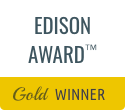Hospitals: C. difficile Still a Killer
Clostridium difficile (C. difficile) is an anaerobic spore forming and toxin producing bacteria that was discovered in 1935, but not identified as a cause of antibiotic associated diarrhea until 1978 and is the most common cause of hospital acquired infections (HAIs). A new strain of this pathogen produces dangerous toxins that can cause serious organ failure and death. This disease has caused more than 44,500 deaths per year and costing more than 5 billion dollars in hospital expenses. (1)
Like most super bugs, C. difficile resides on surfaces in hospitals and long-term care facilities and the disease is spread from patient to patient by various vectors including the hands of health workers. Clostridium difficile (C-diff) infections affects approximately 500,000 patients annually in the United States, of these around 30,000 will die. C-diff carries significant burdens including clinical, social and economic. Many patients are also impacted by recurrent Clostridium difficile (C-diff) infections (rCDI). Up to 35% of index C-diff infections will recur, and of these up to 60% will further recur with multiple recurrences observed.
Mild to explosive diarrhea releases billions of spores that contaminate the bathroom environment, which are then transported on the feet and hands of patients and staff to other areas of the facility. Published papers have shown the relative ease by which these spores are transported by both feet and hands.
Multiple peer reviewed papers published in the Journal of Infection Control and Hospital Epidemiology have categorically stated that the spread of C. difficile can be prevented. Armed with this knowledge, the question as to why this situation has been allowed to continue is perplexing. Papers published by Dr. Philip Carling and Dr. Megan K. Shaughnessy defined one of the reasons that this unnecessary carnage has continued and established a bright line standard of care for addressing the problem. Following the Carling paper, the hand method of cleaning was recognized as inadequate and was abandoned for no touch technologies.
UV technology propelled by millions of dollars of advertising and published papers authored by “researchers” who were paid puppets of the industry garnered the market. Many authors exaulted the “virtues” of UV light without speaking to its scientific limitations. The process of disinfection, defined by the EPA as the ability to achieve a 6 log kill of specific organisms was abandoned. Instead, authors used the term disinfection to describe even a mere 2 log reduction. The peer review process broke down and a inferior technology was accepted by uneducated buyers. These buyers never thought to ask why no leading provider of medical equipment was in the UV business, including those who are also some of the largest manufacturers of light bulbs on the planet.
While more than 44,000 patients died from complications of C. difficile each year before the introduction of no touch technology, disproportionately represented by UV light products, at least 30,000 patients have continued to die each and every year. There are several reasons for this unacceptable situation. First, modern day executives have accepted this situation as a cost of doing business, to which there has been no financial consequence and secondly, because UV light technology is not physically able to achieve a 6 log kill of pathogenic bio-burden on all surfaces.
The corporatization of the American hospital business coupled with its profit motivation has seemingly accepted the death of others as a business consequence of maximizing revenue. A leading American business school published a paper demonstrating why the acceptance of hospital acquired infection (HAIs) is good for business. Absent severe financial consequences, this practice will continue.
When the American public has had enough of its family members contracting preventable hospital infections and when the managers of medical and long-term care facilities recognize that it is cheaper to change than pay injured people, the situation will change. When that happens, Altapure with its ultrasonic technology will affect a paradigm change. Its PAA based technology has been shown, over the last tens years of in hospital use, to be able to eliminate and not just reduce pathogenic bioburden. Altapure’s technology will consistently deliver at least a 6 log kill of C. difficile on all surfaces in a treated space including the floors.

